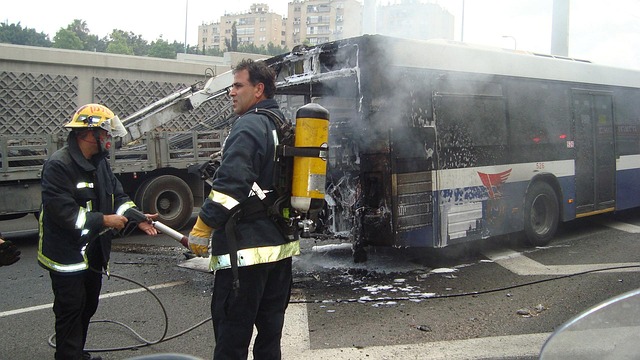Background checks in transportation, particularly driver and passenger safety screenings, are essential for maintaining road safety. Commercial driver verification goes beyond legal requirements by fostering a culture of accountability within the industry. Robust driver screening identifies potential risks like substance abuse through red flags such as changes in appearance or behavior. Advanced technology and data analytics streamline this process, ensuring accurate and efficient commercial driver verification while promoting passenger safety and transportation industry compliance. By adhering to regulations, regularly reviewing protocols, and prioritizing accountability, transport companies can mitigate risks associated with substance abuse, enhancing overall safety and revolutionizing passenger protection.
In today’s world, ensuring passenger safety is paramount, especially within the dynamic landscape of the transportation industry. Background checks play a crucial role in mitigating risks associated with substance abuse among drivers. This article delves into the multifaceted approach to driver background screening, including identifying red flags, understanding legal requirements, and best practices for comprehensive verification. By exploring these strategies, we aim to enhance passenger safety through effective transportation safety checks and uphold compliance in the industry.
- Understanding the Importance of Driver Background Screening
- Identifying Red Flags: Signs of Potential Substance Abuse
- The Process: How to Conduct Effective Driver Verification
- Legal Requirements for Commercial Driver Background Checks
- Implementing Transportation Safety Checks: Best Practices
- Enhancing Passenger Safety through Comprehensive Screening
Understanding the Importance of Driver Background Screening

In the realm of transportation, ensuring passenger safety is paramount. Background checks in transportation play a pivotal role in this regard, particularly when it comes to screening drivers for substance abuse issues. Commercial driver verification processes act as a crucial shield against potential hazards on the road, safeguarding both commuters and other motorists. These comprehensive checks are not merely a regulatory requirement but an essential tool for maintaining order and integrity within the transportation industry compliance framework.
Transportation safety checks extend beyond meeting legal obligations; they are about fostering a culture of responsibility. By conducting thorough background screenings, including passenger safety background checks, transport companies can identify and mitigate risks associated with drug or alcohol abuse among their drivers. This proactive approach not only helps in adhering to regulatory standards but also enhances overall operational efficiency by promoting a safe and reliable driving environment.
Identifying Red Flags: Signs of Potential Substance Abuse

Identifying potential substance abuse issues among drivers is a critical aspect of Background Checks in Transportation, especially within the commercial driving sector. Red flags can manifest through various behaviors and physical signs. For instance, sudden changes in appearance, such as unkempt or disheveled clothing, along with noticeable odors, may indicate drug or alcohol use. Drivers who exhibit erratic behavior, including rapid or slurred speech, poor coordination, or excessive nervousness during routine interactions, should raise concerns.
Additional signs to look out for include frequent and inappropriate lateness, sudden changes in work patterns, and a history of traffic violations or accidents. Transportation industry compliance heavily relies on ensuring passenger safety through driver background screening and vehicle operator screening. Commercial driver verification processes must be robust enough to uncover any red flags that could suggest underlying substance abuse problems, thereby promoting road safety and upholding the standards of the transportation sector.
The Process: How to Conduct Effective Driver Verification

Effective driver verification is a multifaceted process that goes beyond basic licensing. It involves comprehensive background checks in transportation to ensure passenger safety and transportation industry compliance. This includes verifying the validity of commercial driver’s licenses, checking for any past offenses or violations related to vehicle operation, and uncovering potential substance abuse issues. A thorough screening process can help identify at-risk drivers who may pose a danger on the road.
This verification should encompass both historical and current data points. Historical records provide insights into the driver’s behavior patterns over time, while real-time checks ensure that any recent changes or red flags are immediately identified. By integrating advanced technology and data analytics, companies can streamline the process, enhancing accuracy and efficiency in commercial driver verification, ultimately contributing to a safer transportation landscape.
Legal Requirements for Commercial Driver Background Checks

In the transportation sector, ensuring passenger and public safety is paramount, which is why thorough background checks for commercial drivers are not just recommended but legally mandated. These checks, often referred to as driver background screening or commercial driver verification, play a pivotal role in maintaining standards across the industry. Transportation Safety Administration (TSA) and Federal Motor Carrier Safety Administration (FMCSA) regulations require rigorous verification processes for individuals seeking employment as vehicle operators.
The scope of these background screenings includes checking criminal records, reviewing driving history, and assessing any indication of substance abuse issues. Passenger safety background checks are crucial to prevent individuals with a history of drug or alcohol misuse from operating commercial vehicles, thereby reducing potential risks on the road. Transportation industry compliance with these legal requirements is essential to foster a culture of safety and accountability among drivers.
Implementing Transportation Safety Checks: Best Practices

Implementing Transportation Safety Checks: Best Practices
Regular and comprehensive driver background screening is a cornerstone in ensuring transportation safety checks. These checks should go beyond traditional commercial driver verification to include thorough investigations into potential substance abuse issues. Effective screening processes involve utilizing advanced technology for data analysis, employing random drug testing programs, and maintaining up-to-date records of driver behavior. By integrating these practices, transport companies can identify and mitigate risks associated with substance abuse, thereby enhancing passenger safety background checks.
Compliance with industry regulations is paramount. Transport companies must stay abreast of legal requirements pertaining to vehicle operator screening and adapt their procedures accordingly. Regular reviews and updates to screening protocols ensure that the latest best practices are implemented. Moreover, fostering a culture of openness and accountability among drivers can significantly contribute to successful transportation safety checks, ultimately upholding compliance in the transportation industry.
Enhancing Passenger Safety through Comprehensive Screening

In the realm of transportation, ensuring passenger safety is paramount. One effective strategy to achieve this is through comprehensive driver background screening. Beyond the typical licensing and driving history checks, these screenings delve into a driver’s personal and professional background, uncovering potential red flags related to substance abuse. This includes verifying employment records, checking for any legal issues or arrests, and examining medical histories that might indicate past or present drug or alcohol dependencies. By integrating such thorough evaluations into the hiring process, transportation companies can identify and mitigate risks associated with drivers who may compromise passenger safety due to substance misuse.
Commercial driver verification plays a crucial role in enhancing overall transportation safety checks. Strict adherence to background screening protocols ensures that only qualified, trustworthy individuals operate vehicles carrying passengers or hazardous materials. This proactive approach not only complies with regulatory standards but also fosters a culture of accountability within the transportation industry. Effective screening programs act as a game-changer, revolutionizing how we ensure passenger safety and promoting a responsible driving environment.














